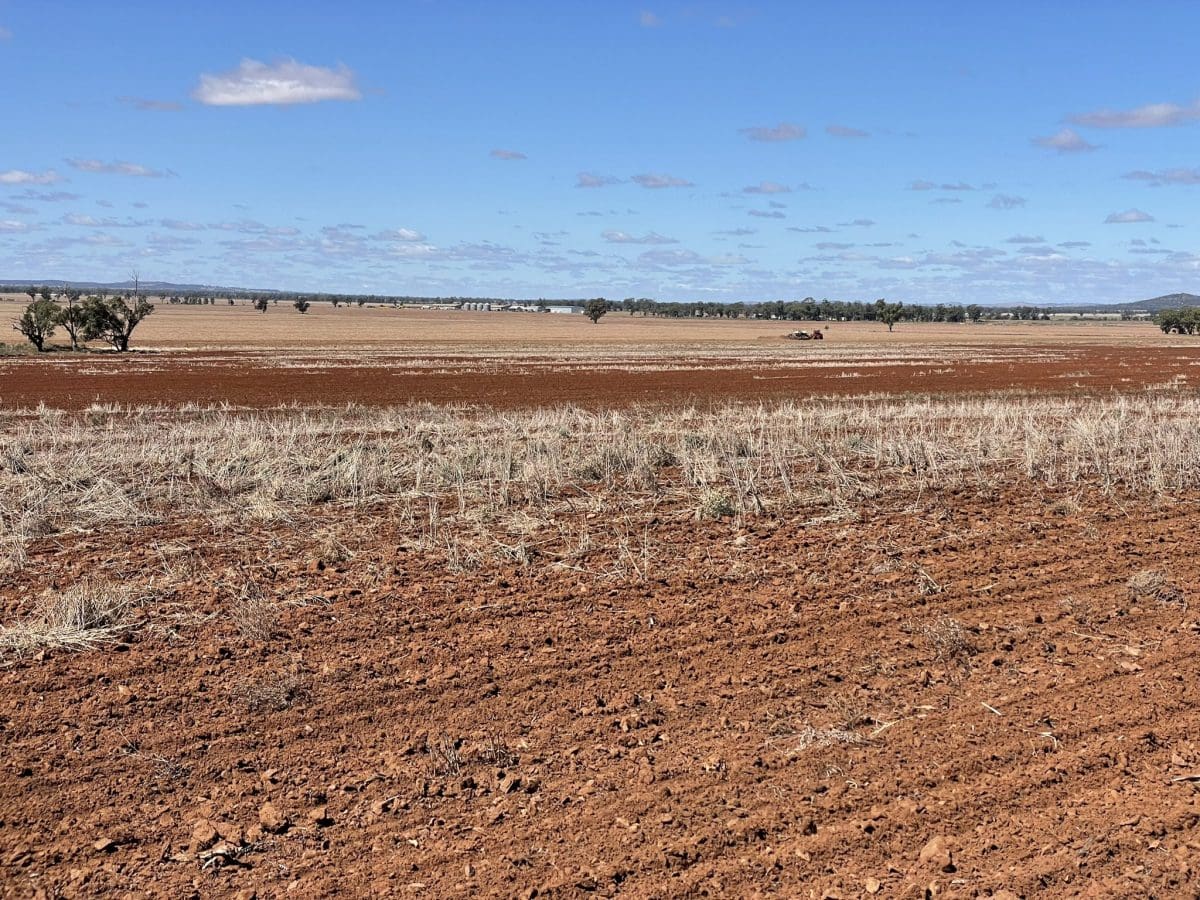
Some early canola goes into the ground on the outer slopes of south-central NSW. Photo: Emma Ayliffe
SUBDUED interest from export buyers facing increased competition from Black Sea cargoes has seen values for feedgrain soften this week.
Demand from domestic consumers is limited in the prompt market, with traders saying most offers from growers are for the July market, which will put income in the new financial year.
In the north, barley continues to hold its premium over wheat as the preferred grain for feedlots, and the sorghum market has weakened on grower selling swamping Chinese demand in the near term.
Widespread rain across southern Australia and patchy falls in northern New South Wales and southern Queensland are shoring up prospects for some early winter-crop planting.
| Today | Mar 23 | |
| Barley Downs | $415 | $415 |
| SFW wheat Downs | $410 | $412 |
| Sorghum Downs | $420 | $425 |
| Barley Melbourne | $365 | $367 |
| ASW Melbourne | $418 | $425 |
| SFW Melbourne | $412 | $420 |
Table 1: Indicative prices in Australian dollars per tonne.
Patchy rain slows sorghum harvest
Rainfall in the week to 9am today was very patchy, and significant registrations in NSW included Gunnedah with 124mm and Narrabri with 101mm.
In Qld, heaviest falls were mostly close to the NSW border, with registrations on the Downs and Maranoa including: Dalby 53mm; Felton 30mm; Jondaryan and Surat 20mm, and Roma 17mm.
The rain has slowed or stopped sorghum harvesting for some, but has generally been welcome to wet the topsoil ahead of growers planting oats as a grazing or dual-purpose crop.
At Stewarts Grain on the north-west slopes of NSW, trader Robert Quinn said end-user demand was limited.
“They all feel well covered, and markets are well balanced,” Mr Quinn said.
“There’s not a huge amount of consumer demand or farmer selling.”
Growers appear to be minimising any additions to their 2022-23 taxable income as the final quarter nears.
“We’re starting to see farmers selling July, which is a sign they’re thinking about tax; 50 percent of our sales inquiry now would be for July.”
RainAg Qld operations manager Scott Merson said growers have sold reasonable volumes of sorghum following another big week of harvest last week ahead of rain.
On white grains, Mr Merson said consumers appeared to be covered, and most demand was coming from the trade looking to cover some short positions.
Much of northern NSW and southern and Central Qld needs more rain to enable winter cereals to be planted, with widespread activity expected by the last week in April if at least 25mm falls in the near term.
“Until we get some seed in the ground, the grower will hold on to stocks,” Mr Merson said.
Talk of a La Nina developing over the winter months has growers keen to hang on to some current-crop grain in case a drought market develops and prices rally.
“They want to have surety of having something there.”
Stocks of wheat in particular are still big in southern Qld and northern NSW, and are held by growers and traders.
“There’s a lot of grain to come to market.”
Early planting seen in south
Handy falls for the week to today in NSW included: Cootamundra 36mm; Grenfell 62mm; Manildra 79mm; Temora 35mm; Trangie 24mm, and Young 72mm.
In Victoria, registrations included 5-10mm over parts of the Mallee and Murray, and 10-20mm over much of the Eyre and Yorke peninsulas and , Wimmera and Victorian Upper North.
In SA, 5-20mm fell in most cropping areas, and parts of WA had big rain, with the Great Southern and Central Wheatbelt getting the highest falls.
WA registrations were mostly 10-40mm but included: Bullfinch and Goomalling 52mm; Corrigin 98mm; Nungarin 81mm; Redlands 66mm, and Quairading 96mm.
It has allowed the planting of dual-purpose canola and oats to start or advance on many farms, despite canola prices being much softer than they were this time last year.
Meanwhile, reports are coming in about slots booked on shipping stems being surplus to trade requirements now that elevator margins out of southern Australia are being hammered by Northern Hemisphere competition.
“There’s competition from the Black Sea, from Russia and Ukraine, and international buyers are taking that and not Australian,” Riordan Grain Services general manager Mark Lewis said.
“It’s very quiet; consumers are buying hand to mouth, and the farmer is not needing to sell a lot more in this financial year,” Mr Lewis said.
Growers are ramping up their pre-planting preparations, which includes collecting tipper-loads of gypsum, lime and fertiliser from depots near port.
“Some grain is coming south for that.”
